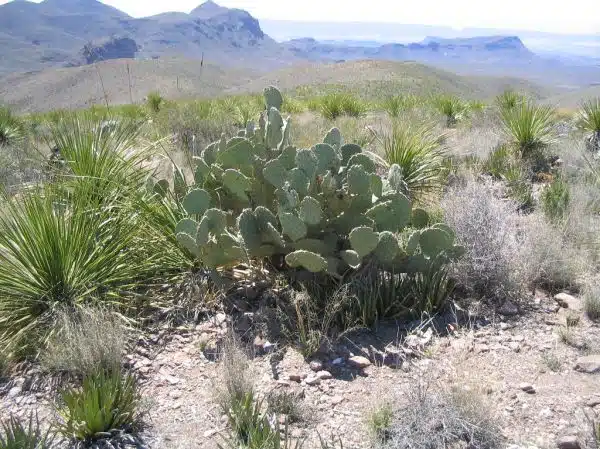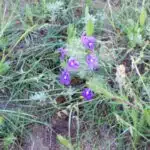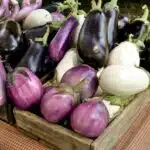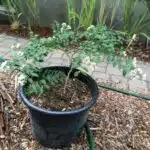Texas Sotol (Dasylirion texanum) is a popular plant among horticulturists due to its unique appearance and versatile nature. This plant, native to the southwestern United States and northern Mexico, belongs to the Asparagaceae family and can grow up to 15 feet tall. It is a hardy plant that is drought-resistant, making it an excellent choice for landscaping in dry regions.
Growing Texas Sotol requires specific knowledge and techniques to ensure optimal growth and health. In this article, we will explore the steps necessary to cultivate this plant successfully. Whether you are a commercial grower or an enthusiast looking for a new addition to your garden, understanding how to grow Texas Sotol will provide you with the skills necessary to achieve success in cultivating this beautiful plant.
Understanding The Characteristics Of Texas Sotol
Texas Sotol, also known as Dasylirion texanum, is a drought-tolerant plant that belongs to the Asparagaceae family. This slow-growing evergreen shrub is native to the Chihuahuan Desert in Texas and Northern Mexico. Its distinguishing features include long, narrow leaves that grow up to four feet long and are covered with sharp teeth along the edges. The plant also produces a tall flowering stalk that can reach up to 15 feet in height.
Texas Sotol is an ideal plant for gardeners who live in areas with hot and dry climates, as it has excellent climate tolerance. This plant can withstand extreme temperatures ranging from below freezing to over 100 degrees Fahrenheit. It prefers well-drained soil and thrives in full sun but can also tolerate partial shade.
When considering growing Texas Sotol, it’s important to note that this plant requires minimal maintenance once established. It doesn’t need regular watering or fertilizing and is resistant to pests and diseases. With its unique appearance and low-maintenance requirements, Texas Sotol is an excellent option for adding texture and interest to xeriscape gardens or other water-efficient landscapes.
As you consider adding Texas Sotol to your garden or landscape, it’s crucial to choose the right location for your plant. In the next section, we will discuss factors such as soil type, drainage, and sunlight needs that are essential for ensuring your Texas Sotol thrives in its new home.
Choosing The Right Location For Your Plant
Understanding the Characteristics of Texas Sotol provides a solid foundation for growing this plant successfully. As a member of the agave family, Texas Sotol has similar requirements to those of agaves. It is drought-tolerant, prefers well-draining soil, and can grow in full sun or partial shade. However, it’s important to note that Texas Sotol is not a true succulent and does require some water during the hottest months of summer.
Choosing the Right Location for Your Plant is crucial for its success. While Texas Sotol can grow in various microclimates, it requires protection from extreme temperatures, especially during winter. In areas with harsh winters, planting Texas Sotol in containers and moving them indoors can help protect them from freezing temperatures. Additionally, choosing a location with good air circulation and away from other plants’ competition will help ensure optimal growth.
Growing in containers is an excellent option for gardeners who live in areas with less than ideal growing conditions. Containers offer better control over soil moisture levels and allow gardeners to move their plants to different locations throughout the year to take advantage of microclimates for success. When growing Texas Sotol in containers, it’s essential to choose a pot that’s at least 18 inches wide and deep enough to accommodate its long taproot system. Use well-draining soil mixed with coarse sand or perlite to ensure good drainage.
Preparing the soil for optimal growth involves several steps that are critical for ensuring your Texas Sotol thrives. First, remove any weeds or grass around the planting area and loosen up the soil to improve drainage. Next, amend the soil with compost or other organic matter to improve fertility and texture. Finally, consider adding sand or perlite if your soil has poor drainage qualities. By following these steps, you’ll set your Texas Sotol up for success as it grows into a beautiful specimen plant!
Preparing The Soil For Optimal Growth
Soil testing is an important step for successful growth of Texas sotol, as it can provide insight into the nutrient content of the soil and indicate if further amendments are necessary. Compost can be added to the soil to improve its water and nutrient holding capacity, as well as to promote microbial activity. To maximize the effectiveness of the compost, it is recommended to chop or shred the compost and mix it into the top 6-8 inches of soil. Finally, it is important to ensure that the soil pH is appropriate for Texas sotol, which generally prefers a soil pH between 6.0 and 7.5.
Testing Soil
As a horticulture specialist, testing soil is an essential step in preparing the soil for optimal growth of Texas sotol (Dasylirion texanum). Soil testing methods are used to determine the pH level, nutrient content, and other factors that can affect plant growth. These tests help to identify any deficiencies or excesses in the soil that may need to be corrected before planting.
Interpreting soil test results is critical to ensuring that the soil is adequately prepared for Texas sotol growth. The results of these tests will provide information on which fertilizers and amendments should be added to the soil. For instance, if a soil test shows that the pH level is too high or too low, it can be corrected by adding lime or sulfur respectively. If the test reveals a lack of nitrogen, phosphorus or potassium in the soil, appropriate fertilizers can be added to address these deficiencies.
In conclusion, conducting soil tests and interpreting the results is essential for growing healthy Texas sotol plants. By following proper testing procedures and addressing any issues identified in the test results with appropriate amendments and fertilizers, gardeners can ensure optimal growth conditions for their plants. Testing the soil ensures that plants receive adequate nutrients while preventing over-fertilizing or under-fertilizing them.
Adding Compost
To further prepare the soil for optimal Texas sotol growth, horticulture specialists recommend adding compost. Composting is a technique that involves breaking down organic matter, such as leaves and kitchen scraps, into a nutrient-rich soil amendment. There are various composting techniques available, including using a compost bin or pile, vermicomposting with worms, or sheet composting by layering organic material directly onto the soil.
The benefits of adding compost to the soil are numerous. It can improve soil structure by increasing its ability to hold water and nutrients while also enhancing its drainage capabilities. Compost can also increase soil fertility by providing essential nutrients, such as nitrogen and phosphorus, to plants. Furthermore, it can help suppress plant diseases and pests while promoting healthy root development.
Overall, adding compost to the soil is an effective way to further prepare it for optimal Texas sotol growth. By utilizing different composting techniques and understanding the benefits of this practice, gardeners can ensure that their plants receive adequate nutrients and thrive in healthy growing conditions. Incorporating compost into the preparation process is just one step towards creating a thriving garden space that will serve both humans and nature alike.
Planting Techniques For Texas Sotol
Texas Sotol (Dasylirion texanum) is a beautiful and hardy evergreen plant that is native to the Chihuahuan Desert of Texas and Mexico. In order to successfully plant Texas Sotol, it is important to consider spacing considerations and companion planting. Spacing considerations are important because Texas Sotol requires plenty of room to grow, while companion planting can help improve soil fertility and provide a more aesthetically pleasing landscape.
When planting Texas Sotol, it is recommended to space each plant at least 4-6 feet apart from each other. This will give each plant enough room to grow into its full size without being crowded. Additionally, it is important to consider companion planting when selecting locations for Texas Sotol. Companion plants such as desert marigold (Baileya multiradiata), blackfoot daisy (Melampodium leucanthum), or purple coneflower (Echinacea purpurea) can help improve soil fertility by fixing nitrogen in the soil while adding visual interest to the landscape.
Spacing considerations and companion planting are crucial factors in ensuring the healthy growth of your Texas Sotol plants. By providing adequate space for each plant and selecting appropriate companion plants, you can create a beautiful landscape that will thrive for years to come. In the subsequent section, we will discuss watering and fertilization requirements necessary for maintaining healthy Texas Sotol plants.
Watering And Fertilization Requirements
Watering and Fertilization Requirements:
Texas sotol is a hardy plant that can withstand drought-like conditions. However, it still requires regular watering to thrive. The frequency of watering depends on various factors like the temperature, humidity levels, and soil type. It is essential to establish a consistent watering schedule to ensure that your plant receives adequate moisture.
When developing a watering schedule for your Texas sotol, consider the size of the plant, the environment it is in, and its growth stage. During the summers, you may need to water your plants more frequently than during winters when they are dormant. Additionally, overwatering can be detrimental to Texas sotols; therefore, it’s crucial to avoid saturating their roots with water.
Organic fertilizers are an excellent choice for feeding Texas sotols as they provide essential nutrients without introducing harmful chemicals into their environment. Compost or well-rotted manure can be added around the base of your plant every three months for optimal results. Alternatively, you can use slow-release granular fertilizers that will slowly release nutrients into the soil over an extended period.
- Consistent watering is crucial for healthy growth.
- Overwatering should be avoided as it can damage the roots.
- Organic fertilizers provide essential nutrients without harming the environment.
Moving onto pruning and maintenance tips…
Pruning And Maintenance Tips
After understanding the watering and fertilization requirements of Texas sotol, it is important to consider the pruning and maintenance tips to ensure its healthy growth. Pruning frequency for this plant is relatively low as it is slow-growing, but occasional trimming may be required to maintain its shape and size. The best time for pruning is during late winter or early spring before new growth appears.
When pruning Texas sotol, it is essential to use proper maintenance tools to avoid damaging the plant. A sharp pair of shears or a pruning saw can be used for cutting back dead or damaged leaves, while a pair of gloves can protect your hands from the sharp edges of the leaves. It is also crucial to sanitize your tools before and after use with rubbing alcohol or a mixture of bleach and water to prevent the spread of diseases.
Proper pruning and maintenance are vital in keeping Texas sotol healthy and free from pests and diseases. In the next section, we will discuss how to deal with common pests and diseases that can affect this plant’s growth. By following these basic guidelines for pruning and maintenance, you can help your Texas sotol thrive in your garden or landscape area.
Dealing With Common Pests And Diseases
As with any plant, preventing infestations and identifying symptoms of diseases is crucial to the success of growing Texas sotol. Pests and diseases can cause significant damage to the plant, leading to stunted growth or even death. To avoid such scenarios, it is essential to take preventive measures and recognize the signs of infestation before they become severe.
One of the most common pests that affect Texas sotol is spider mites. These tiny arachnids feed on the sap of the plant and weaken it, causing discoloration and defoliation. To prevent infestations, keep your plants well-watered as spider mites thrive in dry conditions. Additionally, avoid overcrowding your plants as this creates a favorable environment for spider mites to breed.
Apart from spider mites, Texas sotol is also susceptible to fungal infections like root rot and leaf spots. Symptoms include yellowing or browning leaves, wilting, and premature dropping. To identify these symptoms early on, inspect your plants regularly for any changes in color or texture. Proper drainage and adequate air circulation are effective ways of preventing these infections from occurring.
As a horticulture specialist, it is crucial to emphasize the importance of taking preventive measures against pests and diseases when growing Texas sotol. By keeping a close eye on your plants’ health and implementing appropriate practices, you can ensure healthy growth and high yields.
Preventive Measures Against Pests and Diseases
- Avoid overwatering your plants
- Ensure proper drainage
- Keep your plants well-spaced for good air circulation
- Remove infected parts promptly – Use organic or natural pest control methods, such as neem oil, garlic spray, or insecticidal soap
Propagation Methods For Texas Sotol
Texas sotol is a popular plant that is known for its striking appearance and low maintenance requirements. Propagation of this plant can be done through various techniques such as air layering and division. Air layering involves making an incision on the stem of the plant, packing it with moss or soil, and then wrapping it with plastic to encourage root growth. Division techniques, on the other hand, involve separating the offsets from the parent plant.
Air layering is an effective propagation technique for Texas sotol because it allows for the development of roots without removing the original plant from its location. This method also produces a mature plant faster than other propagation methods as it encourages faster growth of both roots and shoots. However, air layering requires careful attention to moisture levels to avoid rotting in the process.
Division techniques are also useful in propagating Texas sotol plants. This method involves digging up mature plants and separating their offsets from the parent plant. The separated offsets are then replanted in another location or container where they will grow into new plants. Division should be done during springtime when new growth appears on the parent plant for better success rates.
In summary, air layering and division techniques are both effective methods for propagating Texas sotol plants. Each method has its own advantages and disadvantages so it is important to choose one that fits your needs best. With proper care and attention, propagated Texas sotol plants can grow into beautiful specimens that enhance any landscape design. In the next section, we will discuss harvesting and utilizing Texas sotol plants.
Harvesting And Utilizing Texas Sotol
Propagation Methods for Texas Sotol have been discussed in the previous section. Now, let us move on to the next stage of growing Texas Sotol, which is caring for it. Growing Texas Sotol is not difficult, but it requires some attention to detail. It is essential to plant it in well-draining soil that is slightly acidic, as this will prevent root rot and other fungal diseases. It also prefers full sun exposure and can tolerate drought conditions.
Once established, Texas Sotol requires minimal care. However, pruning the leaves annually is necessary as the plant’s leaves grow slowly and can become unsightly over time. The ideal time for pruning is during late winter or early spring before new growth begins. Besides being a beautiful ornamental plant, Texas Sotol has cultural significance as it has been used by indigenous people in creative recipes and crafts.
Creative recipes using Texas Sotol include making a type of flour from roasted sotol hearts that can be used in bread or as a substitute for cornmeal. It has a nutty flavor that adds depth to dishes such as stews or chili. Additionally, the fibers from the leaves are used in weaving baskets and mats, which have been an important part of indigenous culture for centuries. Harvesting and utilizing Texas Sotol can be an exciting way to connect with history while enjoying this unique plant’s beauty and usefulness.
Moving forward, we will now discuss troubleshooting common issues in Texas Sotol cultivation. While relatively low-maintenance plants, they may experience several problems such as root rot, leaf tip burn due to excessive heat or dryness, spider mites infestation, among others. By recognizing these issues early on and taking appropriate measures such as adjusting watering schedules or applying insecticidal soap or neem oil spray can help maintain their health and beauty throughout their lifespan.
Troubleshooting Common Issues In Texas Sotol Cultivation
A common misconception among growers is that Texas Sotol is a low-maintenance plant. While it is true that this species can thrive in hot, dry conditions, neglecting to provide proper care can lead to several issues. One of the most prevalent problems in Texas Sotol cultivation is pest infestation. Fortunately, there are several pest prevention methods that growers can utilize to keep their plants healthy.
- Regularly inspect the foliage for signs of pest activity, such as discoloration or holes in the leaves.
- Use organic insecticides or neem oil to deter pests without harming beneficial insects.
- Keep the growing area clean and free from debris, which can harbor pests.
- Consider companion planting with species that naturally repel pests, such as marigolds or garlic.
Another issue that growers may encounter when cultivating Texas Sotol is nutrient deficiencies. This problem typically arises when the plant does not receive enough water or fertilizer. Symptoms of nutrient deficiencies include yellowing or browning of the leaves and stunted growth.
To prevent nutrient deficiencies, it is crucial to provide adequate water and nutrients throughout the growing season. Fertilize Texas Sotol with a balanced fertilizer every three months during the active growing season (spring through fall). Additionally, ensure that your plant receives enough water during periods of drought or heat stress.
Overall, proper care is essential when cultivating Texas Sotol. By implementing regular pest prevention methods and providing adequate water and nutrients, growers can avoid common issues such as pest infestations and nutrient deficiencies. With these practices in place, your Texas Sotol will thrive and provide beauty to your landscape for years to come.
Conclusion
In conclusion, cultivating Texas Sotol can be a rewarding experience for any horticulturist. With its unique and striking appearance, the plant is an excellent addition to any garden or landscape. Understanding the characteristics of Texas Sotol is crucial before starting the cultivation process. Careful consideration should be given to choosing the right location and preparing the soil for optimal growth.
Planting techniques, watering and fertilization requirements, as well as pest and disease management are all essential components of successful cultivation. Propagation methods for Texas Sotol can be challenging but rewarding. Harvesting and utilizing this plant has cultural significance in many parts of America.
While troubleshooting common issues in Texas Sotol cultivation may arise, with proper care and attention, it is possible to overcome these obstacles. Overall, growing Texas Sotol requires patience, diligence, and a deep appreciation for its unique beauty. As horticulture specialists, we encourage gardeners to explore this remarkable plant’s potential in their gardens and landscapes.
Image Credits
- “Cacti, Sotol Vista, Big Bend National Park, Texas” by Ken Lund (featured)





























